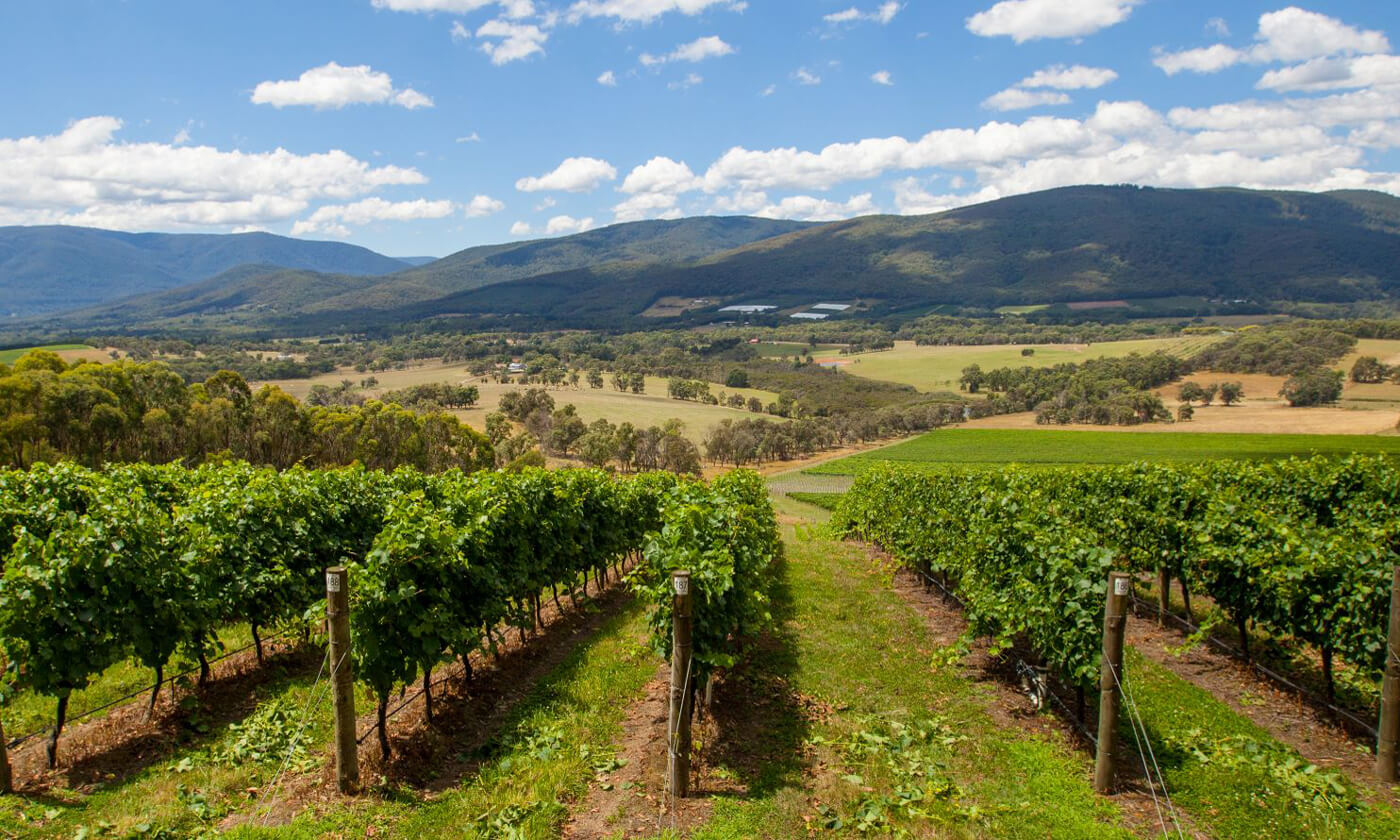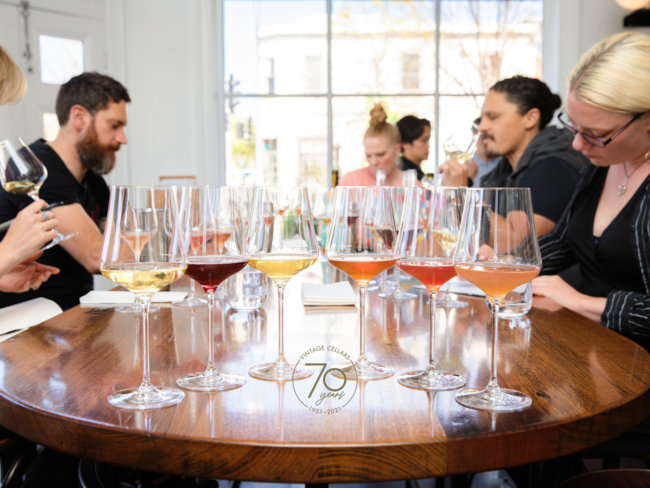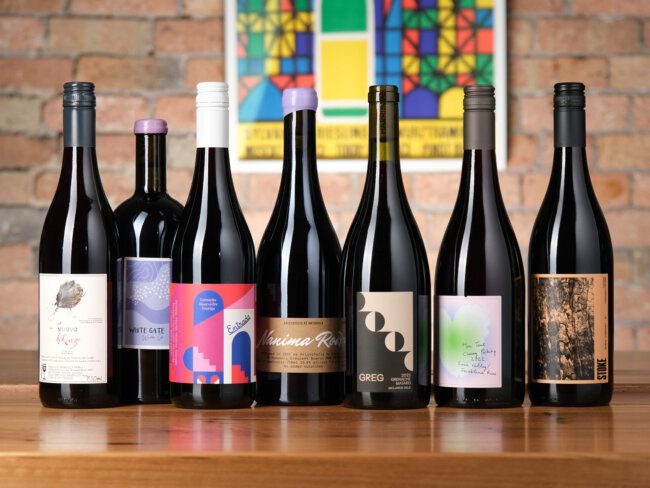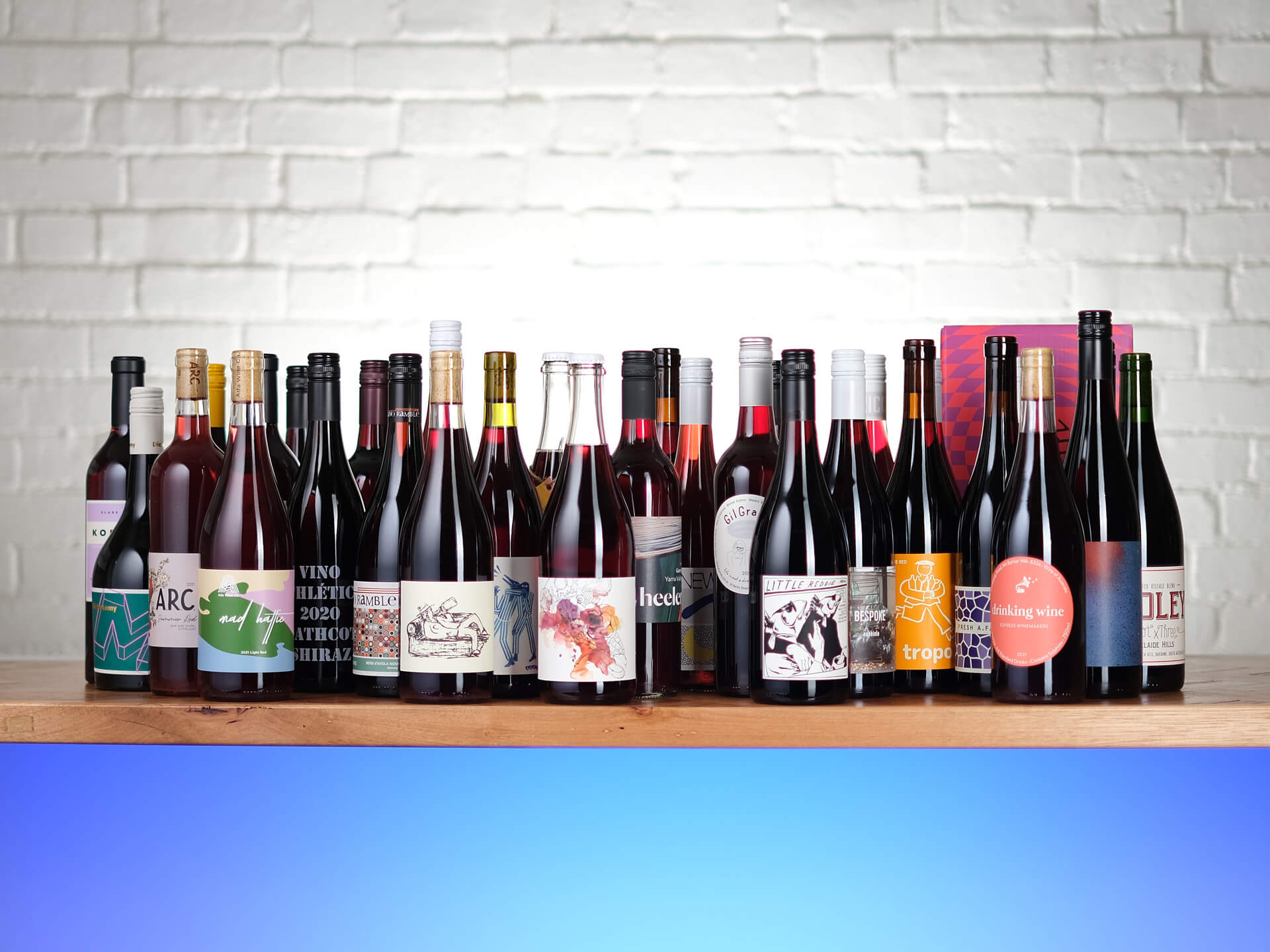It’s hard to mount an argument against the Yarra Valley being Victoria’s most important wine region. It is the home to some of the most hallowed names – Mount Mary, Yarra Yering, Seville Estate, Wantirna Estate, Yeringberg, Coldstream Hills – and has the largest fine wine output of any Victorian region, and by a stretch. It is also the cradle for some of the country’s finest winemaking talent, and for a zone with a distinctly classical feel, it is notably progressive, with vignerons both fledgling and established shaping a new future. Over the years, the Yarra has provided a wealth of YGOW finalists, including 2014’s Best New Act, Adrian Santolin (Santolin) and 2010 People’s Choice Winner Franco D’Anna (Hoddles Creek Estate). This year’s Top 50 includes DCB Wine’s Chris Bendle and Tim Perrin from Oakridge.
Although Victorian viticulture is strong today, many of the regions planted in the 19th century either spiralled into terminal economic decline, were removed in an attempt to control the vine louse phylloxera, or succumbed to the pest. In fact, the state’s industry held on by a slender thread through the early part of the 20th century. The Yarra Valley’s demise was an economic one, with the last commercial harvest at Yeringberg in 1921. The revival began in the early 60s, with the pace picking up considerably in the 90s.
![]()
Coldstream Hills vineyard.
Today, pinot noir and chardonnay arm wrestle for supremacy in terms of plantings, with pinot just edging ahead, while shiraz is increasingly being seen as a taut string to the Yarra bow. Cabernet has a surprisingly modest presence given its regal status in the region, turning out classically medium-bodied expressions that are unmistakably of place.
There’s a solidity to the Yarra, a sense of the established, but experimentation by producers – both new and old – and an investment in new varieties make the region a very dynamic one.
“As a classic producer, having some experimental and progressive wines can co-exist quite freely,” he says. “It puts the power in the consumer’s hands, and we are able to offer them either something completely different, or they can stick to the wines they love.”
DCB Wine’s Chris Bendle believes that dynamism is down to a couple of factors, including many key estates being relatively young. “Some of the older estates have very fine traditions, and they stick to their ways, but many producers came to the Yarra in the 90s,” he says. “Being near Melbourne also drives a lot [of forward thinking]. Like myself, you can actually live in Melbourne and work in the Valley, where that’s not possible in somewhere like Margaret River. You have contact with quite a spectrum of people and wine, as opposed to making and living in a rural area.”
The classic and the avant-garde
Oakridge winemaker Tim Perrin sees this mix of the classic and the avant-garde nestling together somewhat seamlessly, both for producers and consumers. “As a classic producer, having some experimental and progressive wines can co-exist quite freely,” he says. “It puts the power in the consumer’s hands, and we are able to offer them either something completely different, or they can stick to the wines they love.”
“The change has been felt most on the warmer valley floor where chardonnay and pinot noir are no longer suitable in most parts. We are focusing on syrah and Bordeaux varieties on our warm sites. I think Portuguese varieties such as touriga nacional have a bright future, too. Sarah Crowe at Yarra Yering has more than proved this.”
A warming climate is seeing many producers responding to manage current vintage conditions, as well as to plan for the longer term. Some of the warmer areas of the Lower Yarra are already too warm to reliably grow high-quality pinot noir, with other varieties being planted. At De Bortoli, Steve Webber believes that gamay has a strong future, and some of the hotter plots in their estate vineyards have been planted to the variety.
![]()
The view from De Bortoli’s Yarra Valley Estate vineyard.
At Oakridge, the approach is slightly different, if the reality is the same. “Climate change is here and we as a region need to adapt,” says Perrin. “The change has been felt most on the warmer valley floor where chardonnay and pinot noir are no longer suitable in most parts. We are focusing on syrah and Bordeaux varieties on our warm sites. I think Portuguese varieties such as touriga nacional have a bright future, too. Sarah Crowe at Yarra Yering has more than proved this.”
Grape remixes
Those Portuguese varieties aren’t new to the Yarra Yering site, though, with founder Dr Bailey Carrodus planting touriga naçional, tinta cão, tinta roriz, tinta amarela and alvarelhão back in 1990. Today, winemaker Sarah Crowe continues the tradition of their vintage fortified, ‘Portsorts’, as well as making the ‘Dry Red No.3’ from the same varieties. Crowe also launched a touriga and shiraz blend, suggesting a more expansive future.
Shiraz has developed a strong identity in the Yarra, if the plantings are still relatively modest. Makers like Garry Mills (Jamsheed), Luke Lambert (Lambert) and Andrew Marks (The Wanderer), along with Giant Steps and bigger players like De Bortoli, have realised the potential sketched out by pioneers like Yarra Yering and Seville Estate. Mount Mary have pushed further into Rhône varieties to future-proof their vineyards, planting shiraz along with grenache, mourvèdre and cinsault for reds, and marsanne, roussanne and clairette for whites.
![]()
Giant Steps’ Applejack vineyard in the Yarra Valley.
Behn Payten and Troy Jones, of Payten & Jones, are also investing in planting grenache, and they are already championing sangiovese, along with Tony Fikkers (Fikkers) and Timo Mayer (Mayer), amongst others. Mayer also makes a whole bunch nebbiolo, while Luke Lambert is arguably driving it to its greatest heights, working from the granitic Denton View Hill Vineyard – an unusual geology in the valley, where red volcanic and grey loam and clay soil dominate.
Bendle also makes nebbiolo, alongside several iterations of chardonnay and pinot noir. “I think there’s a bit of scope for nebb… It comes down to that light dry red category, like gamay and pinot meunier, those sort of alternatives to pinot that suit the valley.”
Perrin notes that variety is not the only management tool, both with existing and new vineyards. “Viticulture has its part to play,” he says, “encouraging more canopy on the western side or considering an east-west orientation compared to the traditional north-south. There are also cooler parts of the Upper Yarra which at the moment are marginal for grape growing, but in the future who knows.”
New times for old varieties
The potential for those marginal sites is indeed an exciting prospect. Many sites in the Upper Yarra were originally planted to make sparkling wine, being seen as too cool for still wine production. The Yarra’s highest planted site is the Wombat Creek Vineyard, Gladysdale. It was planted in 1988 for sparkling production, but now turns out significant still chardonnay and pinot noir made by its owners Handpicked Wines and Yarra Valley modern royalty Giant Steps, helmed by Steve Flamsteed.
“There’s a group of older growers who planted their vineyards some time ago,” says Bendle. “Hardys used to take the bulk of their fruit for sparkling base, then Chandon stepped into their shoes, but then they let those contracts go when they shifted focus to the King Valley. All off a sudden, those vineyards that had been locked away for a decade or more were available, and the demand for premium pinot and chardonnay, especially pinot, has gone through the roof. And all the big boys are trying to lock away Upper Yarra vineyards.”
That shift to cooler sites is not solely down to climate, though, with a distinct stylistic diversion from the 90s styles of chardonnay and pinot noir to those of today. Back then, the bolder tones of the valley floor wines resonated more, while racier whites and more fragrant reds fit today’s bill somewhat better. It’s fair to say that the success of those cooler sites now is down to a combination of both factors, with vine maturity also adding more depth to the wines.
“We’re not afraid of a bit more tannin, a bit more structure, a bit more body. The Upper Yarra has lots of fragrance but can lack a bit of substance, but people are learning to balance that extraction better. Hopefully we end up in the comfortable middle ground where we get beautiful fragrant characters but have some power and structure.”
Bendle believes, however, that those modern ultra-light and fragrant styles of pinot are also being rethought. “For a period, people in the Yarra were a bit scared of tannin. But the pendulum has swung back,” he says. “We’re not afraid of a bit more tannin, a bit more structure, a bit more body. The Upper Yarra has lots of fragrance but can lack a bit of substance, but people are learning to balance that extraction better. Hopefully we end up in the comfortable middle ground where we get beautiful fragrant characters but have some power and structure.”
Subregional distinctions
That division of the cooler Upper Yarra and warmer Lower Yarra is naturally a simplistic one, with much territorial nuance in between. While long-established wine regions such as the Barossa Valley have distinct subregions, more youthful ones like the Yarra Valley are still trying to define theirs. Mac Forbes (a three-time Young Gun finalist) in particular has pushed the message, with bold front-label presentations of ‘village’ name on his wines.
Perrin thinks these subregional distinctions are important to make. “I see it particularly in pinot noir and chardonnay,” he says. “I can definitely see a difference in the wines from Gladysdale, Woori Yallock, Seville and Hoddles Creek when compared with one another. However, we as a region are still exploring the concept of subregions and I really hope we get there so we can then educate the consumer.”
![]()
Oakridge’s Tim Perrin.
The Yarra Valley is a region with well-established paths, but it is one that takes future steps very seriously, adapting and rethinking to be even stronger going forward. Underpinning that is an interlaced wine community that shares and challenges in equal measure.
“The Yarra Valley wine community is a very connected one, we are all of the belief that if everyone is producing great wine then that benefits the region,” says Perrin. “While we don’t see each other as much as we would like, we are always happy to ‘talk shop’ with one another and share ideas and experiences.
The Wines
![]()
Photo by James Morgan.
2018 DCB Wine Pinot Noir
Sour red and black cherries, redcurrant, woodsmoke, brown spices and an earthy edge, but more in a freshly turned way, with an appealingly fertile humus complexity. There’s a spicy, linear feel through this, bright red fruits driving and adding freshness, with darker berry/cherry notes chiming in. A savoury skinsy burr to the fine tannins adds complexity through the finish, with acid freshening.
2018 DCB Wine ‘Whole Bunch’ Pinot Noir
A lifted nose of wild red and dark cherries, red forest berries, macerated strawberry, crushed autumn leaves, warm spices and just-baked ginger biscuits. There’s ample fruit intensity, with those cherry and berry notes riding a supple play of silky texture and lacy tannins that belie its 100 per cent whole bunch ferment, with a sense of generosity and richness cinched in by bright acidity and fine but linear grip.
2019 Oakridge ‘Garden Gris’
Cherry-ish hue, faint haze, suggestion of tawny hints. This is quite aromatic in an open, lifted and warm spiced way. Some pear notes, small red fruits, brown spices and just-baked berry Danish, with a gently earthy back note and a crackle of twiggy spice. There’s a warmth and generosity to the fruit, with some fleeting sour cherries. The front palate is immediately textural and viscous, but that’s quickly embraced by a velvet purr of grape tannin that takes the richness and smooths it out with a cranberry grip.
2019 Oakridge Meunier
Lifted forest berries, wild red and sour black cherries on the nose, with a hint of bitter almond, dusky florals, some darker spice notes – a suggestion of star anise and cassia. This is mid-weight, but it punches a bit deeper in the vintage, with riper tones nicely accented with wild, sour fruit notes and savoury accents. There’s a plump of texture and fruit generosity here, but also a sheath of fine tannin and fresh acidity giving it drive.
See the full list of Top 50 winemakers in the 2020 Young Gun of Wine Awards here. Join in our virtual events here, and also vote on who wins the People’s Choice until June 1.










